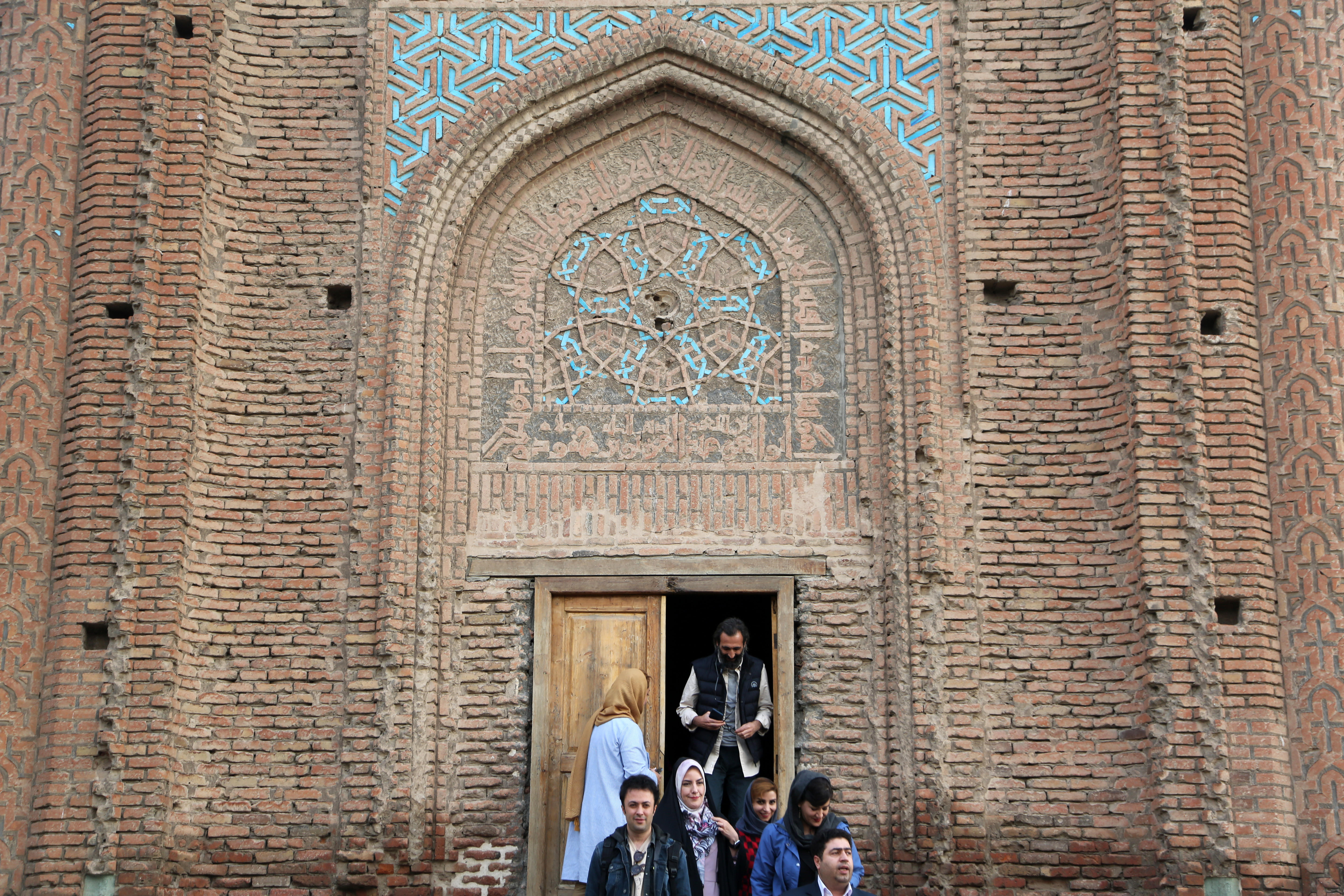Seljuk splendor: Timeless legacy of Iran’s Red Dome

The Red Dome, constructed by the Seljuks in 1147 in the province of East Azerbaijan, stands as a monumental structure defying the passage of time
The Red Dome, an architectural monument constructed in 1147 during the Seljuk era in the city of Meragh, located in Iran’s East Azerbaijan province, is known by its Persian name, Gombed-i Surh. Even after 900 years, the structure has remained intact.
The dome consists of two parts: a stone base and a central chamber. The square column in the center of the crypt was built to bear the weight of the dome and transmit it to the walls.
Mina Rencber, an expert at the Iranian Ministry of Cultural Heritage, Tourism and Handicrafts, told AA that they could not find any burial site or gravestone during the restoration work on the historic structure.
Rencber mentioned that the architectural work from the Seljuk era derives its name from the use of red mudbricks in its construction. The historical site has been placed under protection within its expansive garden.

Rencber stated that the sultans commissioned such works during their lifetimes and that they named the place in question a “monumental dome” because they could not find any remains of graves inside.
Stating that the mixture of adobe and turquoise-colored ceramic was first used in this structure, Rencber said, “The name of the sultan and the architect is written on the inscription at the top of the dome, and above it is written 1147, the date the dome was built.”

Alongside its architectural significance, the historical dome garners attention for its intricate ornamentation. Similar to numerous other historical monuments in the city of Meragha, renowned for its development of tiling techniques, the Red Dome features elaborate tile decorations.
The small turquoise-colored tiles are primarily used in door casings, while square-shaped tiles adorn the corner piers of the building.

Above the tile decorations on the door, an inscription is scripted in Kufic letters, further contributing to the historical and cultural richness of the Red Dome.
Source: Newsroom



